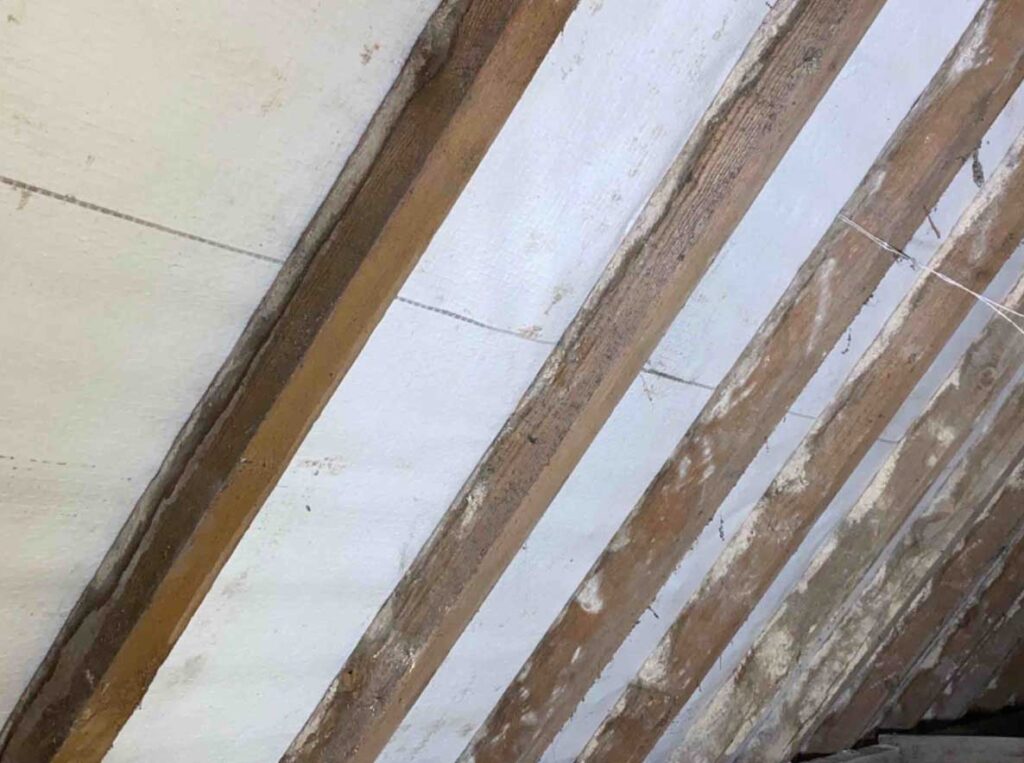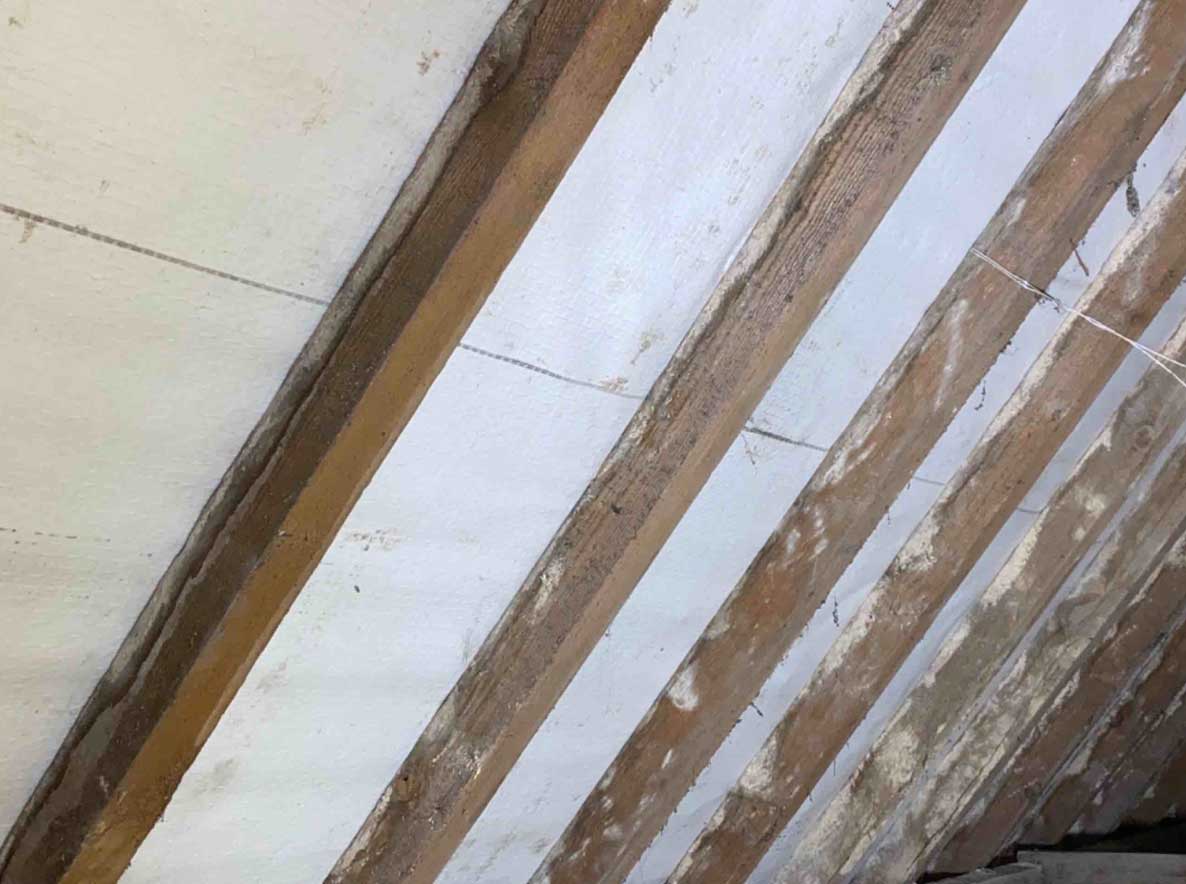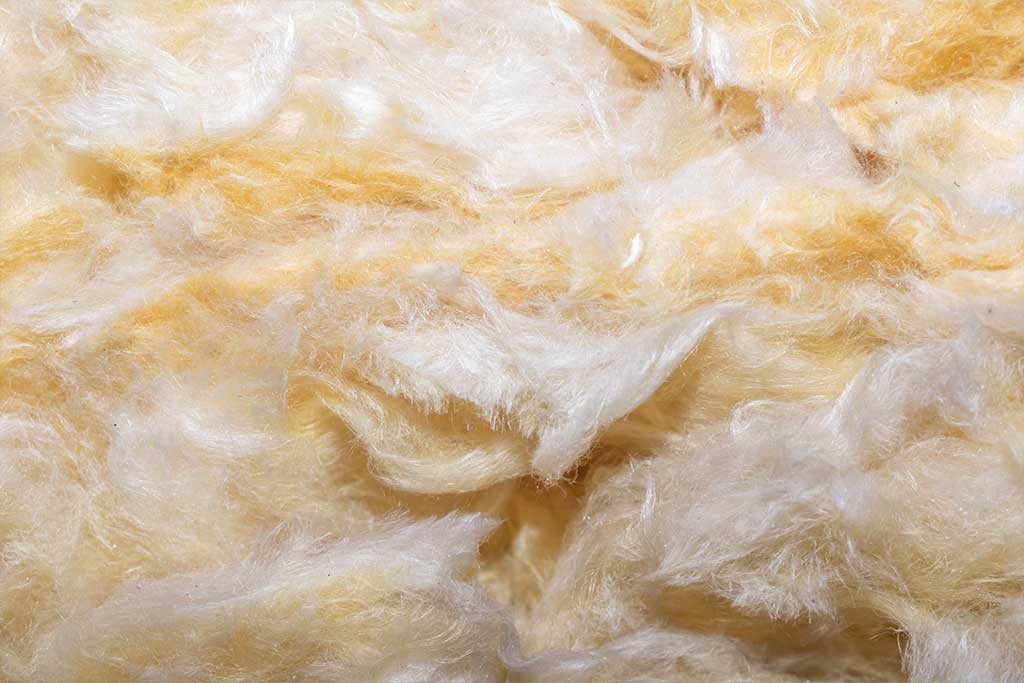One of the most common places for mold to grow unnoticed is in your loft or attic. The warm, poorly ventilated space provides mold with the ideal conditions for growth. If not addressed promptly, the mold can to the rest of the property.
What causes mould?
Mould grows in environments that contain excess moisture. The main causes include damp, high humidity, and condensation. Poor ventilation and airflow can also contribute to mould growth as they enable moist air to build up.
Mould is a common feature in lofts due to their lack of ventilation and is often caused by leaks from the roof. The fungus feeds off organic material, like wood, which lofts tend to contain plenty of, too. Another key cause is a lack of insulation. When insulation is inadequate or missing altogether, it creates cold spots on surfaces. When warm, moist air comes in contact with them, condensation forms, making the surfaces damp.
Poorly installed insulation can cause condensation as gaps or spaces create uneven temperatures across surfaces, as well. Loft boarding that has been insulated inadequately can contribute to mould growth. Without proper thermal barrier protection between the boarded area and the roof itself, heat escapes easily, raising humidity levels in the loft.
The type of material used for insulation might even hold onto moisture rather than repelling it, staying damp long enough to allow mould to grow.
The signs of mould in your loft
Musty Odours
Mould releases microbial volatile organic compounds that produce damp, earthy, and musty odours. The fungus can also emit sour and tangy smells, or resemble the scent of rotting matter. This odour is particularly in enclosed spaces like lofts, where ventilation may be limited
Water damage
Water stains on ceiling panels or beams indicate moisture ingress, which could result in mold development if not addressed.
Visible signs of growth
Mould often manifests as discolouration or staining on surfaces such as walls, ceilings, and insulation materials within the loft space. While mould appear in various colours, including black, green, or yellow, it likely that you will find white mould in the loft. White mould is an early development phase and will become a darker colour as it matures.
Dampness and condensation
An increase in dampness levels or persistent condensation on in the indicates the presence of excessive moisture, which may lead to.
Is mould in your loft dangerous?
Exposure to mould can pose significant health risks and is linked to a range of ailments including allergic reactions, respiratory infections, and sick house syndrome.
People with pre-existing health conditions like asthma or allergies, weakened immune systems, and elderly people and young children are more vulnerable to mould exposure. Prolonged exposure could lead to more severe respiratory issues over time.
Some types of mould even produce mycotoxins – toxic chemicals – which are linked to more serious issues.
Mould growth can also cause structural damage as it can eat away at the material it grows on. Wood is particularly susceptible to mould and will start to rot after prolonged growth. This deterioration not only compromises the structural integrity of the property but can even decrease its value.
Any items stored in the loft are vulnerable to damage, too, particularly those made of organic material like wood and certain types of fabric. Mouldy items taken out of the loft and put on display around the home, such as seasonal decorations, can cause the mould growing on them to spread around the property.
How to treat mould in the loft properly
Attempting to remove mould without proper knowledge of mould remediation or specialist equipment can exacerbate the problem. Disturbing mould colonies can release thousands of spores into the air which you could inhale or allow to spread throughout your home.
Moreover, without addressing the root cause of moisture, any DIY efforts, such as applying bleach or spraying the affected area with vinegar, will just be temporary fixes and the mould will return.
Why professional mould removal is essential
Professionals have access to personal protective equipment (PPE) and follow stringent safety protocols to ensure that mould is removed safely without risking their health.
Specialists will begin with a thorough inspection of your loft space, identifying all areas affected by mould, too. If you remove the mould yourself, you might leave behind hidden mould which will just grow back.
Experts can even address the underlying moisture issues, such as advising on better insulation, or detecting damp and leaks. This will ensure you implement a long-term solution rather than a short-term fix.
Mould cleaners will have specialist equipment for thorough mould removal, as well. They can give you peace of mind they will remove all the mould from the hard surfaces and the air.
There are also lots of challenges associated with removing mould from the loft, the main one being accessibility. The tight spaces make it difficult for people without specialist equipment to effectively reach and treat all the affected areas.





